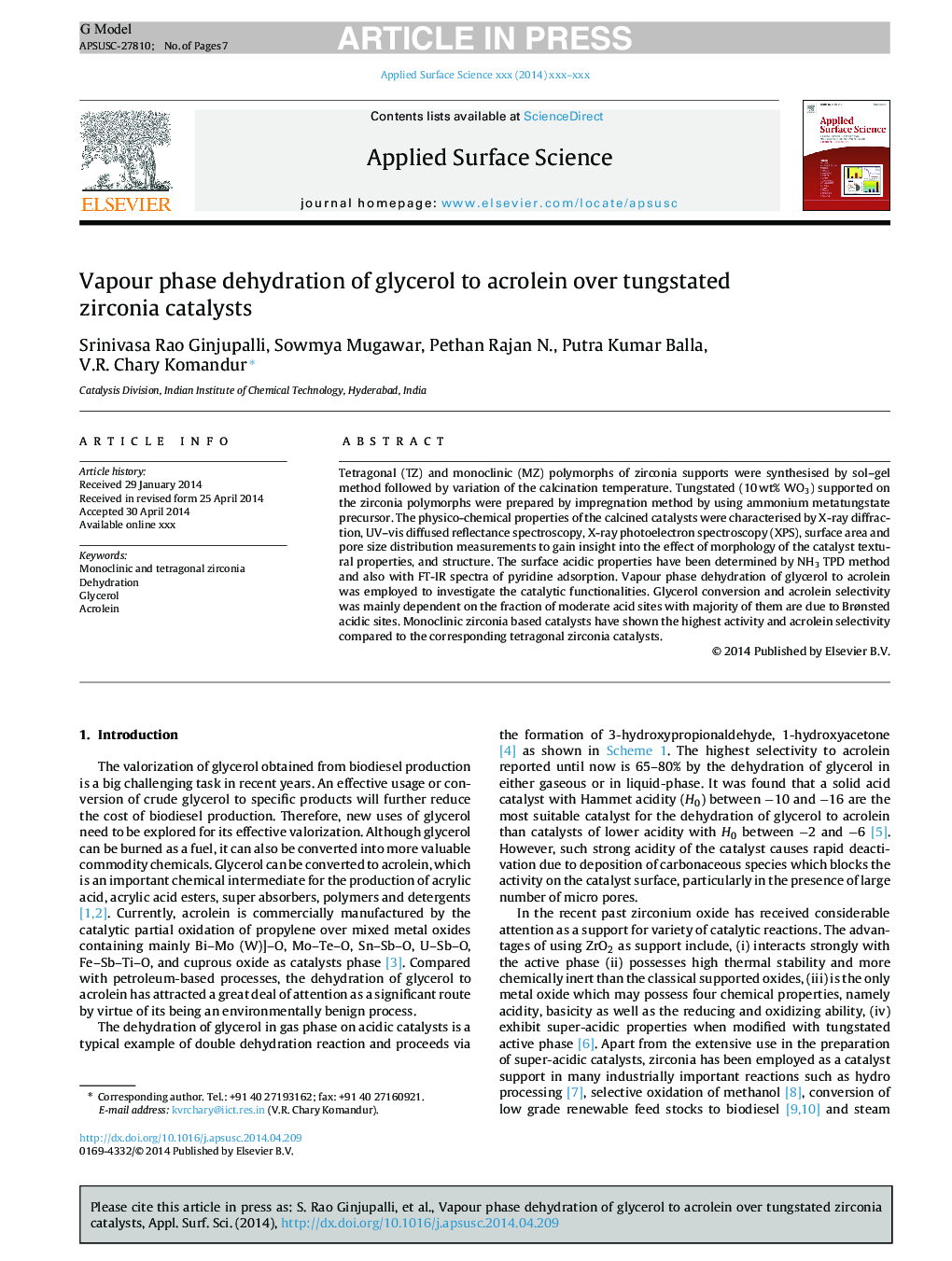| Article ID | Journal | Published Year | Pages | File Type |
|---|---|---|---|---|
| 5357052 | Applied Surface Science | 2014 | 7 Pages |
Abstract
Tetragonal (TZ) and monoclinic (MZ) polymorphs of zirconia supports were synthesised by sol-gel method followed by variation of the calcination temperature. Tungstated (10 wt% WO3) supported on the zirconia polymorphs were prepared by impregnation method by using ammonium metatungstate precursor. The physico-chemical properties of the calcined catalysts were characterised by X-ray diffraction, UV-vis diffused reflectance spectroscopy, X-ray photoelectron spectroscopy (XPS), surface area and pore size distribution measurements to gain insight into the effect of morphology of the catalyst textural properties, and structure. The surface acidic properties have been determined by NH3 TPD method and also with FT-IR spectra of pyridine adsorption. Vapour phase dehydration of glycerol to acrolein was employed to investigate the catalytic functionalities. Glycerol conversion and acrolein selectivity was mainly dependent on the fraction of moderate acid sites with majority of them are due to Brønsted acidic sites. Monoclinic zirconia based catalysts have shown the highest activity and acrolein selectivity compared to the corresponding tetragonal zirconia catalysts.
Keywords
Related Topics
Physical Sciences and Engineering
Chemistry
Physical and Theoretical Chemistry
Authors
Srinivasa Rao Ginjupalli, Sowmya Mugawar, Pethan Rajan N., Putra Kumar Balla, V.R. Chary Komandur,
